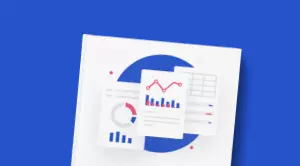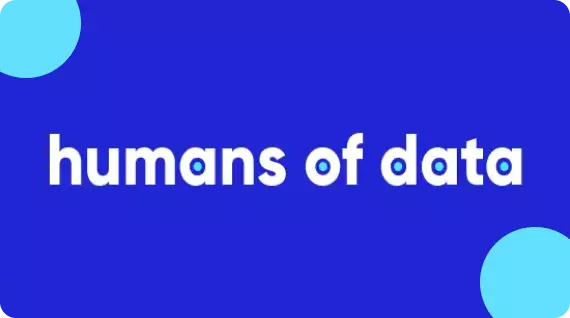Data Privacy vs. Data Security: Definitions and Differences

Share this article
Data privacy is the right to control access to one’s personal data, whereas data security encompasses the protective measure taken to prevent unauthorized access to databases and websites.
Data privacy refers to the protection of individuals’ personal information and ensuring that it is handled in a way that respects their rights and preferences. Data security, on the other hand, is the practice of safeguarding data from unauthorized access, breaches, or damage.
Modern data problems require modern solutions - Try Atlan, the data catalog of choice for forward-looking data teams! 👉 Book your demo today
In this article, we will understand how data privacy and data security are closely related concepts, yet they have different meanings and areas of focus.
Let’s dive in!
Table of contents #
- Data privacy vs. data security? Understanding the basics
- What is the basic difference between data privacy and data security?
- Which is more important - Data privacy or data security?
- Data privacy vs. data security in big data
- Can you have data privacy without data security?
- Data privacy vs. data security vs. data protection: Tabular view
- Rounding it all up
- Data privacy vs data security: Related reads
Data privacy vs. data security? Understanding the basics #
Data privacy and data security are two critical components of information management, particularly in the age of the internet and digital data. They may seem synonymous, but they refer to distinct concepts that provide a comprehensive approach to protecting sensitive information.
What is data privacy? #
Data privacy is often referred to as information privacy, is about the appropriate use and handling of data—specifically, personal data. It focuses on the rights of individuals to control or influence what data is collected about them, how it is used, by whom, and for what purposes.
- Data privacy encompasses compliance with laws and regulations, such as the General Data Protection Regulation (GDPR) in the European Union and the California Consumer Privacy Act (CCPA) in the United States.
- These laws often stipulate how organizations should obtain consent from individuals before collecting or processing their personal data. They also explain how organizations should store and secure this data, and what rights individuals have in relation to their data (such as the right to access or delete their data).
What is data security? #
Data security refers to protective digital privacy measures that are applied to prevent unauthorized access to computers, databases, and websites.
- Data security also protects data from corruption. It is the practice of keeping data protected from corruption and unauthorized access, thus ensuring privacy.
- Data security includes a wide range of security measures, such as encryption, authentication, access controls, network security measures (like firewalls), and secure coding practices. These measures help protect data both at rest (when it is stored) and in transit (when it is being sent or received).
It’s worth noting that while data security is a crucial component of data privacy (you can’t have privacy without security), the inverse isn’t always true. A system could be highly secure (i.e., hard to hack or access without authorization) but still not respect privacy if it collects, uses, or shares data in ways that are inappropriate or that don’t respect individuals’ rights.
In summary, data privacy is about the right use and governance of data, while data security focuses on the protection of data. Both are vital in today’s data-driven world. In the next section, we demarcate the differences between data privacy and data security using a tabular view.
What is the basic difference between data privacy and data security? #
Data privacy and data security, while interconnected, address different aspects of data management and protection. Understanding the distinction between the two is crucial in effectively safeguarding information in the digital age.
Data privacy #
- Definition: Data privacy, also known as information privacy, concerns the proper handling, processing, storage, and usage of personal information. It revolves around the rights of individuals to control their personal information and how it is used by organizations.
- Focus: The focus of data privacy is on compliance with laws and regulations, such as the General Data Protection Regulation (GDPR) in Europe or the California Consumer Privacy Act (CCPA) in the United States. It deals with consent, notice, and regulatory obligations concerning personal data.
- Scope: Privacy policies and procedures dictate what data can be collected, how it should be used, who has access to it, and how long it can be retained. This includes guidelines on data minimization (collecting only what is necessary), purpose limitation (using data only for the stated purpose), and ensuring user rights (like the right to access, rectify, or delete personal data).
- Challenges: The main challenges in data privacy involve navigating various legal frameworks, adapting to changing regulations, and managing user consent and preferences effectively.
Data security #
- Definition: Data security refers to the protective measures and tools implemented to safeguard data from unauthorized access, breaches, or theft. It’s about protecting data from external attacks and internal misuse.
- Focus: The focus here is on implementing technical and organizational measures to ensure data integrity, confidentiality, and availability. This includes protecting data from malicious threats like hacking, as well as accidental loss or corruption.
- Scope: Data security encompasses a wide array of practices such as encryption, access control, network security, intrusion detection, and regular security audits. It involves both technological solutions (like firewalls and antivirus software) and organizational strategies (like employee training and strict access policies).
- Challenges: The challenges in data security are keeping up with evolving cyber threats, securing data across different platforms and devices, and ensuring continuous monitoring and response readiness for potential breaches.
In summary, while data privacy is about ensuring that personal data is used in a way that respects individual privacy rights and complies with legal standards, data security focuses on protecting data from unauthorized access and breaches, regardless of whether the data is personal or not. Both are essential components of a comprehensive data protection strategy, each addressing different facets of the broad domain of data protection.
Which is more important - Data privacy or data security? #
It’s about having the appropriate safeguards and controls in place to manage risks and protect the integrity, availability, and confidentiality of data. While both concepts aim to protect data, they do it from different angles:
- Data privacy is about respecting and protecting the rights of individuals whose data is being collected.
- But, data security focuses on protecting data from unauthorized access and breaches to ensure its confidentiality, integrity, and availability.
However, both concepts are interrelated. A robust data security framework is necessary to maintain data privacy. At the same time, understanding data privacy rules can help in creating a more robust data security framework. Without strong security, privacy may be compromised, and without considering privacy, security controls could be ineffective.
Data privacy vs data security in big data #
The concept of privacy and security, when applied to big data, gains a new dimension due to the sheer volume, velocity, and variety of data involved. Big data involves the processing of vast amounts of data, often from varied sources, and this can create new challenges and risks in terms of both privacy and security.
Big data privacy #
Big data privacy concerns revolve around whether individuals’ data is appropriately collected, stored, shared, and used.
-
Given the amount of data collected and processed in big data environments, organizations often hold incredibly detailed information about individuals. This information could be used in ways that individuals did not foresee or consent to when they initially provided their data.
-
One of the main privacy challenges with big data is the issue of “data inference” or “data linkage.” Even if data is anonymized, the vast scale and variety of big data can allow organizations to combine different data sets and infer personal information about individuals. For example, they might be able to re-identify individuals in anonymized data by cross-referencing it with other data sets.
-
Another privacy concern in big data is “function creep”, which refers to data being used for purposes different from the purposes for which the data was initially collected. This could happen if an organization decides to use its data for new purposes, or if the data is shared or sold to other organizations.
Big data security #
Big data security involves implementing measures to protect large volumes of data from threats like unauthorized access, data corruption, or data breaches. The large scale and complexity of big data can make it harder to ensure all data is properly protected.
-
In big data environments, data often flows across different systems, networks, and organizational boundaries, which increases the potential points of vulnerability. Traditional security measures like firewalls and security perimeters may not be sufficient to secure big data environments.
-
Big data security involves several layers of security including network security, data storage security, data processing security, data transmission security, and access control. Implementing these security measures in big data environments often requires specialized tools and techniques.
-
In addition to this, the use of big data often involves cloud-based platforms or other third-party services, which can also raise security challenges. For example, organizations need to ensure that these services provide adequate security measures and that they handle the data in a way that complies with applicable laws and regulations.
So, while the principles of privacy and security remain the same in the context of big data, the scale, complexity, and often the transitory nature of big data create new challenges and complexities. Consequently, privacy and security need to be considered and integrated into the big data lifecycle right from the start.
Can you have data privacy without data security? #
Data privacy and data security are interrelated concepts, and while they are distinct, it is challenging to have meaningful data privacy without a certain level of data security. Here’s a detailed explanation of this relationship:
1. Data privacy and its dependence on data security #
- Data privacy is about safeguarding individuals’ personal information and ensuring that organizations handle it responsibly and in accordance with privacy laws and regulations.
- To achieve data privacy, organizations need to collect, process, and store personal data in a way that respects individuals’ rights, which includes obtaining consent for data collection, providing transparency about data usage, and giving individuals control over their data.
- Data security plays a crucial role in enabling these data privacy practices. Without adequate data security measures, it becomes challenging to ensure that personal data is protected from unauthorized access, breaches, or misuse.
2. Risks of insufficient data security #
- If an organization lacks robust data security measures, personal data is at a higher risk of being compromised through data breaches, cyberattacks, or insider threats.
- Without data security, unauthorized individuals or malicious actors can gain access to sensitive information, leading to privacy violations. This can result in data leaks, identity theft, financial fraud, and reputational damage to both individuals and organizations.
3. Legal and regulatory requirements #
- Many data privacy regulations, such as GDPR in Europe or CCPA in California, include provisions that require organizations to implement adequate security measures to protect personal data.
- Inadequate data security can lead to non-compliance with these regulations, resulting in legal consequences, fines, and reputational damage.
4. Trust and reputation #
- Data breaches and privacy violations erode trust between individuals and organizations. A lack of data security can lead to public distrust, damaging an organization’s reputation and potentially causing a loss of customers and partners.
5. Operational integrity #
- Poor data security practices can disrupt an organization’s operations, lead to data loss, and incur significant costs for remediation and recovery.
6. Holistic approach #
- To achieve robust data privacy, organizations should take a holistic approach that combines data privacy practices (such as consent management and data subject rights) with strong data security measures (such as encryption, access controls, and threat detection).
- The combination of these two aspects ensures that personal data is not only handled with respect for privacy but also protected from potential threats.
In conclusion, while it is theoretically possible to have some level of data privacy without data security, it would be extremely challenging and risky. Data security is an essential foundation for effective data privacy. It ensures that personal data is protected from unauthorized access and misuse, allowing organizations to comply with regulations, maintain trust, and uphold ethical data handling practices.
Data privacy vs. data security vs. data protection: Tabular view #
Below is a tabular comparison of data privacy, data security, and data protection:
| Aspect | Data privacy | Data security | Data protection |
|---|---|---|---|
| Definition | Concerns the proper handling, processing, and use of personal information. | Involves implementing measures to protect data from unauthorized access, breaches, or theft. | Encompasses both data privacy and data security to safeguard data comprehensively. |
| Focus | Ensuring that personal data is used in a way that respects individual rights and complies with legal standards. | Protecting data from external threats (like hacking) and internal misuse. | Overall management and governance of data to ensure its confidentiality, integrity, and availability. |
| Scope | Legal compliance (GDPR, CCPA, etc.). Consent and user rights. Data usage policies. | Technical measures (encryption, firewalls).Organizational strategies (access controls, training). | Combines privacy and security aspects.Holistic approach to data lifecycle management. |
| Challenges | Adapting to changing regulations.Managing consent and user preferences. | Evolving cyber threats. Securing data across various platforms and devices. | Integrating privacy and security measures.Balancing data usability with protection. |
| Key components | - Privacy policies. Data minimization. User consent management. | Network security. Intrusion detection systems. Regular security audits. | Data governance frameworks.Compliance with legal and ethical standards. Continuous risk assessment and mitigation. |
This table illustrates the distinct yet overlapping areas of data privacy, data security, and data protection, highlighting their individual focus areas, scope, challenges, and key components.
Rounding it all up #
In conclusion, data privacy and data security are interconnected and vital for organizations in today’s digital landscape. Understanding the differences between these concepts and implementing appropriate measures is crucial.
Data privacy focuses on individuals’ rights to control their personal data, while data security safeguards data from unauthorized access and breaches. Neglecting data privacy and security can result in severe consequences such as data breaches, regulatory penalties, loss of customer trust, legal action, identity theft, and operational disruptions.
By prioritizing ongoing efforts, employee training, privacy by design, incident response planning, and ethical considerations, organizations can protect their data, maintain compliance, and foster trust with customers.
Data privacy vs data security: Related reads #
- Data Lineage Explained: A 10-min Guide to Understanding the Importance of Tracking Your Data’s Journey
- Data Governance vs Data Security: Nah, They Aren’t Same!
- What is Data Governance? Its Importance & Principles
- Data Governance 101: Principles, Examples, Strategy & Programs
- What is Metadata?- Examples, Benefits, and Use Cases
- Metadata Management: Benefits, Automation & Use Cases
- Data Catalog: Does Your Business Really Need One?
- Business Glossary — Definition, Examples, Responsibility & 5 Common Challenges
- Data Governance Framework — Guide, Examples, Template
- Data Governance Roles and Their Responsibilities
- Data Governance Policy — Examples & Templates
- Data Dictionary — Examples, Templates, Best Practices, and How To Create a Data Dictionary
- What Is a Data Warehouse: Concept, Architecture & Example
- Data Marketplace vs data catalog: Understanding the Differences and Choosing the Right Data Management Solution
Share this article









